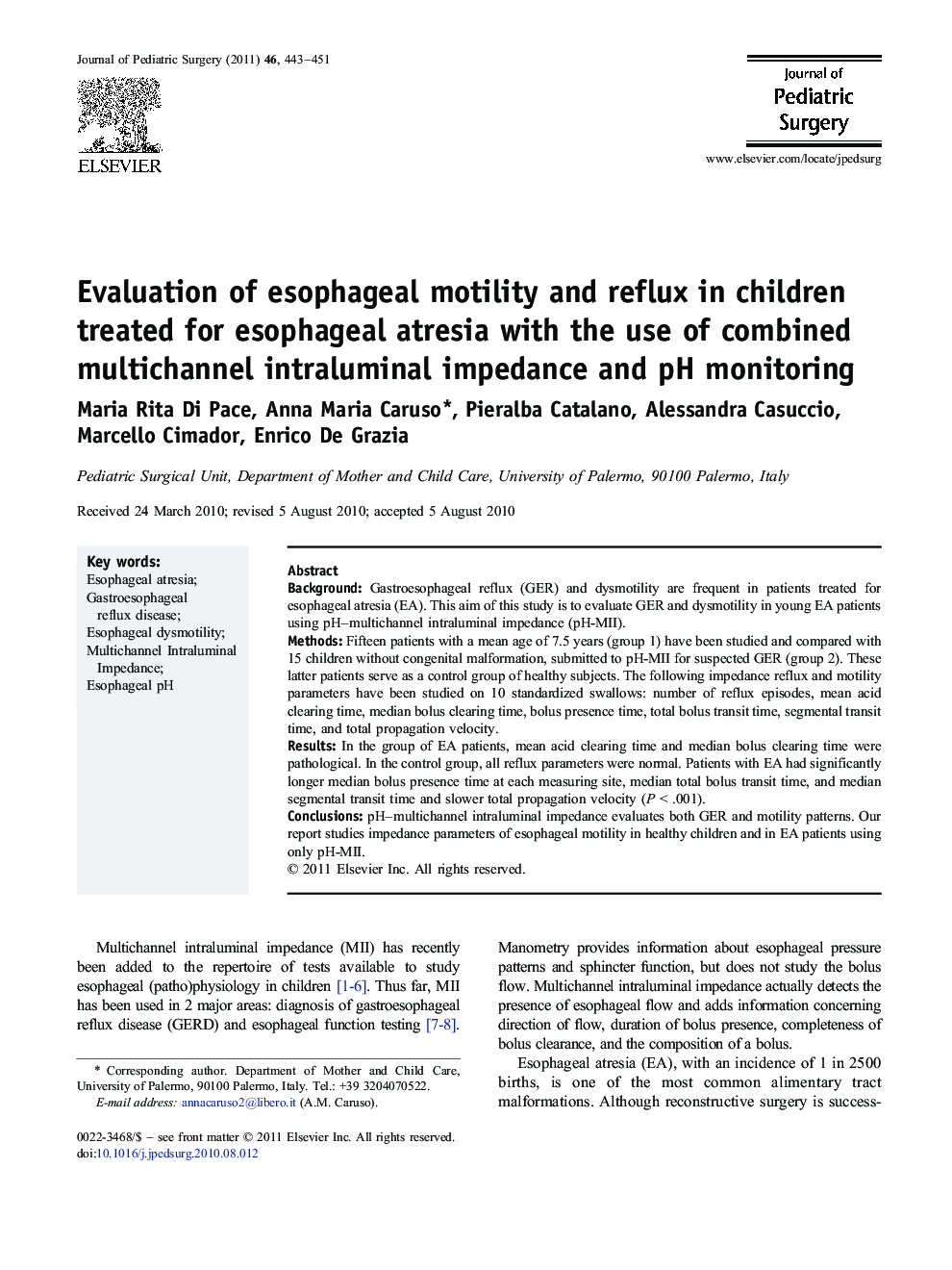| Article ID | Journal | Published Year | Pages | File Type |
|---|---|---|---|---|
| 6218037 | Journal of Pediatric Surgery | 2011 | 9 Pages |
BackgroundGastroesophageal reflux (GER) and dysmotility are frequent in patients treated for esophageal atresia (EA). This aim of this study is to evaluate GER and dysmotility in young EA patients using pH-multichannel intraluminal impedance (pH-MII).MethodsFifteen patients with a mean age of 7.5 years (group 1) have been studied and compared with 15 children without congenital malformation, submitted to pH-MII for suspected GER (group 2). These latter patients serve as a control group of healthy subjects. The following impedance reflux and motility parameters have been studied on 10 standardized swallows: number of reflux episodes, mean acid clearing time, median bolus clearing time, bolus presence time, total bolus transit time, segmental transit time, and total propagation velocity.ResultsIn the group of EA patients, mean acid clearing time and median bolus clearing time were pathological. In the control group, all reflux parameters were normal. Patients with EA had significantly longer median bolus presence time at each measuring site, median total bolus transit time, and median segmental transit time and slower total propagation velocity (P < .001).ConclusionspH-multichannel intraluminal impedance evaluates both GER and motility patterns. Our report studies impedance parameters of esophageal motility in healthy children and in EA patients using only pH-MII.
